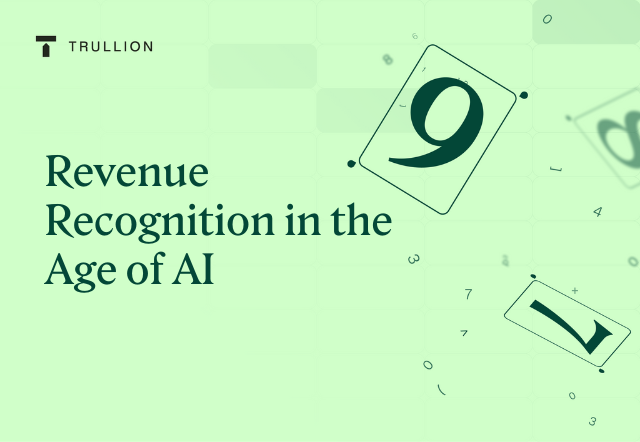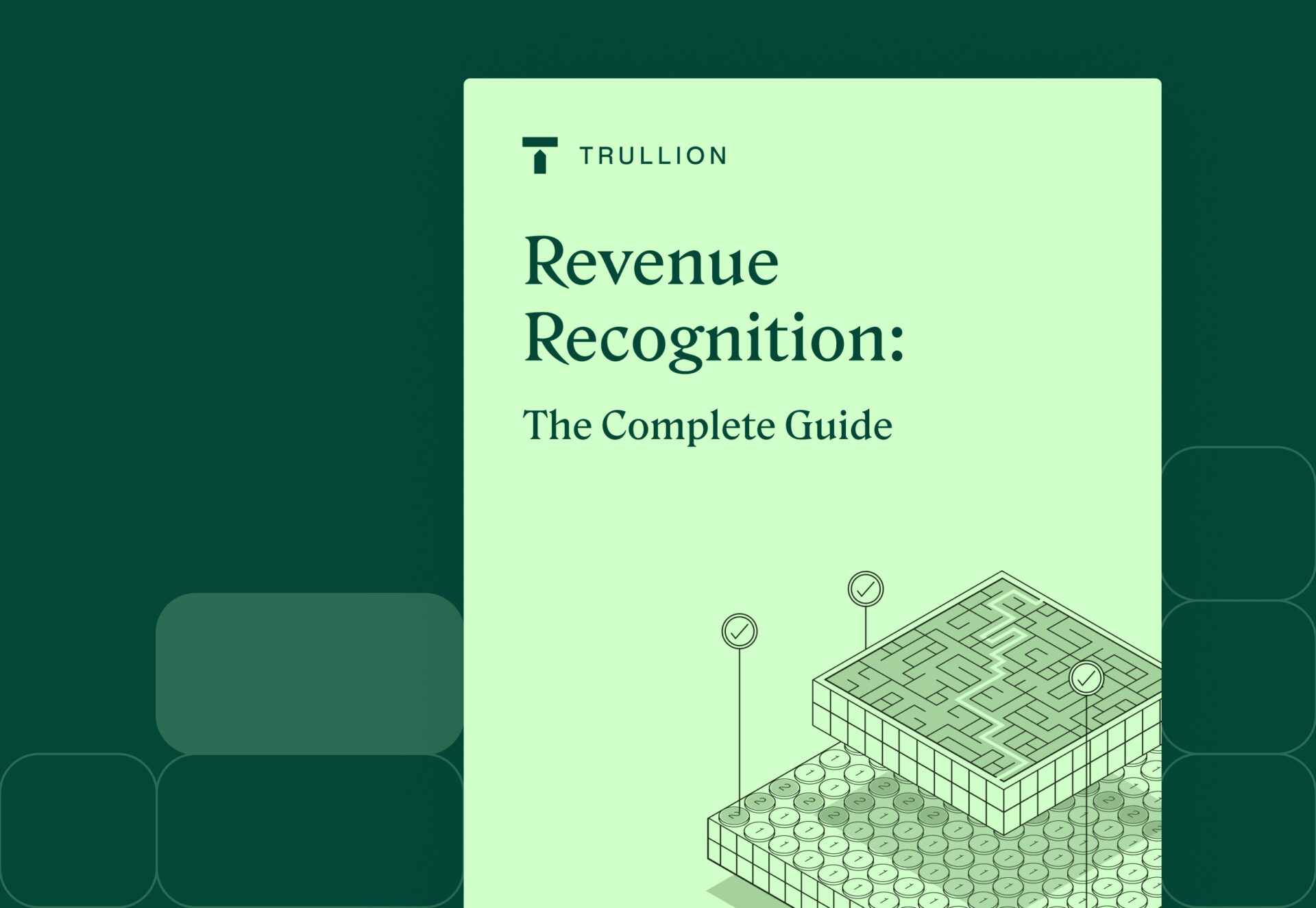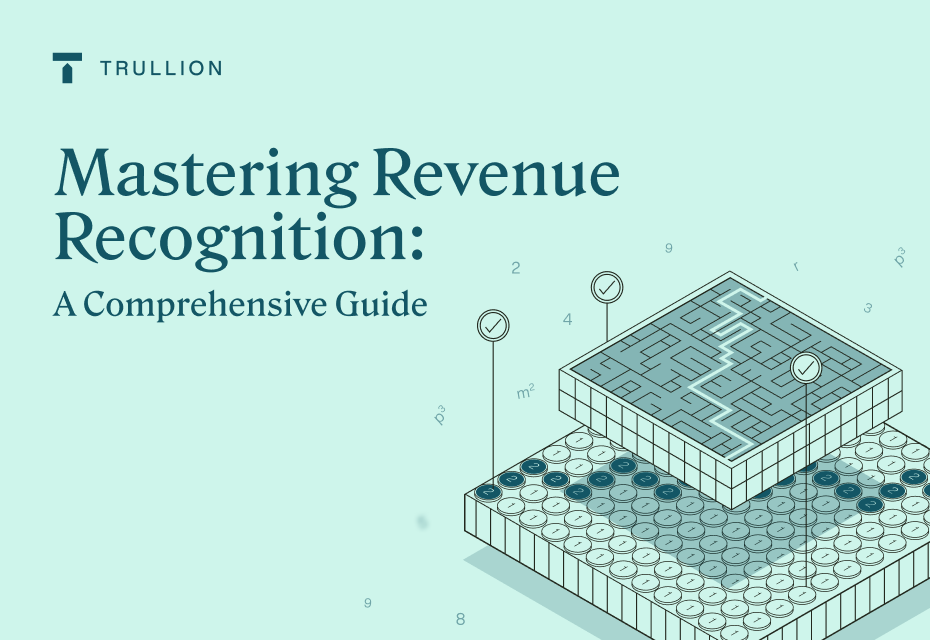Introduction
In the dynamic landscape of modern finance, successful finance leaders must be intimately familiar with modern revenue recognition. There are two main reasons for this.
The first is that the world of business and finance has changed significantly over the last few years. For many leaders, the revenue models they studied or even worked on in the early days of their careers have evolved tremendously.
The second reason is compliance. Accounting standards including ASC 606 and IFRS 15 set out a robust and comprehensive model for recognizing revenue, which in any event is arguably the most critical element of a company’s finances.
Let’s explore the crucial role that revenue recognition plays for senior finance and accounting leaders, and examine how, in today’s age of AI, these leaders can harness artificial intelligence to enhance efficiency and accuracy in revenue recognition processes.
About Rev Rec
Revenue recognition, or “rev rec,” governs the way that organizations recognize and account for revenue in their books and financial reporting.
The increasing complexity of modern revenue models
In recent years, the landscape of revenue recognition has undergone a profound transformation. Modern businesses are shifting away from traditional one-time sales towards more intricate revenue models. These models encompass such offerings as subscription-based services, software as a service (SaaS), bundled product and service offerings, and long-term contracts. As a result, revenue recognition has become increasingly complex. In traditional transactions, recognizing revenue was a relatively straightforward process – you made a sale or offered a service, and you booked the revenue.
However, the advent of these new revenue models introduces a host of challenges that accountants and finance leaders must grapple with. For example, recognizing revenue over time instead of at a single point in time, determining the standalone selling price for bundled offerings, and accounting for performance obligations all add layers of intricacy to the process.
Complexity in revenue recognition
Navigating the modern revenue recognition landscape is not without its challenges. Businesses are now tasked with identifying performance obligations, assessing the timing of revenue recognition, and dealing with variable consideration, all of which require a keen understanding of complex contractual arrangements.
Moreover, as companies expand internationally, they must cope with varying international accounting standards and local regulations, making the revenue recognition process even more arduous. To add to the complexity, misjudging revenue recognition can have significant implications, including non-compliance, financial restatements, and potential legal consequences.
This makes it imperative for accountants and finance leaders to keep a close eye on the changing regulatory landscape and continuously update their revenue recognition policies to stay compliant and accurate in their financial reporting, or alternatively, implement a software-based solution that will ensure continuous compliance.
Accounting standards including ASC 606 and IFRS 15
Accounting standards, including ASC 606 and IFRS 15, have been pivotal in addressing the evolving challenges of revenue recognition. Both the Financial Accounting Standards Board (FASB) and the International Accounting Standards Board (IASB) introduced these standards, emphasizing uniformity and clarity in revenue recognition practices.
These standards have established a comprehensive framework for recognizing revenue from customer contracts. ASC 606 and IFRS 15 provide a structured five-step model that assists companies in determining when and how to recognize revenue. They highlight the significance of identifying performance obligations, estimating variable consideration, and allocating transaction prices to each obligation.
A key trend emerges
Given the challenges and complexities discussed previously, relying on manual methods such as spreadsheets for accounting revenue is not only impractical, but also fraught with risk.
With the age of AI upon us, there are now more effective, more accurate, and more efficient ways to achieve this.
This is revenue recognition in the age of AI.
Groundbreaking technologies for rev rec in the age of AI
Emerging technologies are revolutionizing revenue recognition, from automating the data extraction process through to ensuring continuous compliance and surfacing critical insights.
Artificial Intelligence (AI), Optical Character Recognition (OCR), and Machine Learning (ML) are being leveraged to extract and analyze relevant financial information from a variety of documents, such as contracts and invoices. AI algorithms can identify key data points, reducing the risk of manual errors and significantly speeding up data entry.
AI-powered accounting software solutions like those offered by market leader Trullion provide numerous benefits when it comes to revenue recognition in the age of AI:
Data consolidation
When it comes to revenue recognition in the age of AI, data consolidation is a critical step. Emerging technologies are streamlining this process by integrating various data sources, including sales, finance, and customer relationship management systems. This consolidation facilitates a single source of truth for revenue data, enhancing accuracy and reducing the time required for reconciliation.
Recognition logic
Advanced algorithms and machine learning are reshaping recognition logic. These technologies can identify complex patterns in contracts and agreements, ensuring that the recognition of revenue is aligned with the latest accounting standards, like ASC 606 or IFRS 15.
Revenue analysis
The analysis of revenue data is becoming more sophisticated with the latest technologies. AI and data analytics can provide deeper insights into revenue trends, customer behavior, and product performance. This enables finance leaders to make data-driven decisions, optimize pricing strategies, and identify areas for revenue growth.
Audit reporting
Technology is simplifying the audit reporting process for revenue recognition. Automated audit trails, real-time data validation, and comprehensive reporting tools ensure transparency and compliance. Auditors can rely on digital records and perform more efficient and accurate audits, reducing the risk of discrepancies.
Ongoing compliance
Ongoing compliance is critical in revenue recognition, and AI-powered technologies are making it easier to stay compliant with changing regulations. Modern tools can continuously assess contracts and revenue data, alerting finance teams to potential issues and helping them adapt to evolving standards. This ongoing oversight reduces the risk of non-compliance and financial restatements, ensuring long-term financial health.
Automation
AI can streamline the data entry process by automating the extraction of financial data from contracts, invoices, and other documents. It reduces the need for manual data entry, minimizing errors and increasing efficiency.
Fraud detection and prevention
AI can play a significant role in detecting revenue-related fraud. By analyzing financial transactions and patterns, AI algorithms can flag unusual or suspicious activities.
Best practices
When it comes to revenue recognition in the age of AI, the following best practices are recommended:
- Stay informed about regulatory changes: Keep a close watch on evolving accounting standards and regulations. In the age of AI, accounting standards may change to accommodate technological advancements. Note that leading AI-powered accounting software solutions will automatically take these changes into account.
- Develop clear revenue recognition policies: Clearly define your revenue recognition policies and procedures, aligning them with the latest accounting standards.
- Monitor AI-generated insights: AI can provide valuable insights into revenue trends, customer behavior, and performance. Continuously monitor these insights and integrate them into your decision-making processes.
- Document assumptions and judgments: Maintain thorough documentation of assumptions and judgments made in the revenue recognition process. This documentation is critical for transparency and compliance.
- Implement cross-functional collaboration: Promote collaboration between finance, legal, and sales teams, among others. In the age of AI, understanding how contracts are structured and how revenue is recognized requires input from multiple departments.
- Enhance cybersecurity measures: As AI systems handle sensitive financial data, prioritize robust cybersecurity measures to protect against data breaches and cyber threats.
- Adapt to technological advances: Be flexible and prepared to adapt as AI technologies continue to evolve. This includes upgrading your AI systems and incorporating new features that can enhance revenue recognition processes.
How Trullion can help
Trullion’s AI-powered Revenue Recognition solution offers everything you need to have your rev rec taken care of. This powerful platform does the heavy lifting for you, ensuring accuracy, compliance, and slashing the amount of time you need to spend on this area of financial reporting.
Trullion’s revenue recognition solution gives you:
- Data centralization: See all revenue data in one place as Trullion integrates information from multiple channels, including your CRM, billing, and other business systems. AI ensures that relevant key data is extracted with the highest degree of accuracy.
- Recognition logic: Configure Trullion once, and automation takes over to seamlessly handle your revenue recognition for you.
- Revenue analysis: Surface valuable insights thanks to advanced AI-driven analytics, and get accurate forecasts, complete audit logs, and more.
- Audit-ready: The Trullion solution is built to be audited – auditors get access, and all reports and journal entries are ready for audit.
- Continuous compliance: Being a SaaS-based solution, Trullion is always updated to take the latest standards and updates into account.
To get the best of revenue recognition in the age of AI, and see what Trullion can do for your organization, reach out today.







